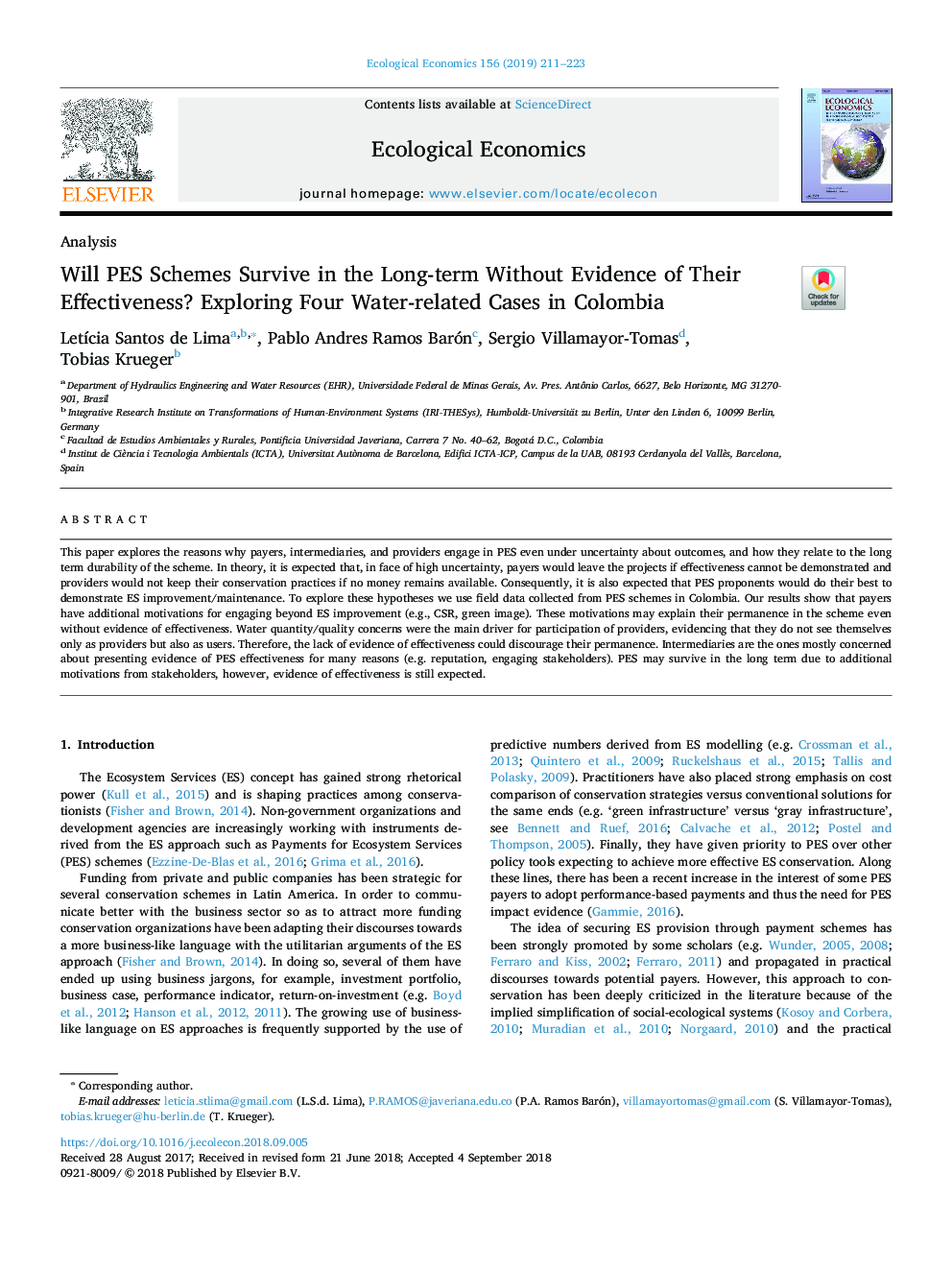| Article ID | Journal | Published Year | Pages | File Type |
|---|---|---|---|---|
| 11029797 | Ecological Economics | 2019 | 13 Pages |
Abstract
This paper explores the reasons why payers, intermediaries, and providers engage in PES even under uncertainty about outcomes, and how they relate to the long term durability of the scheme. In theory, it is expected that, in face of high uncertainty, payers would leave the projects if effectiveness cannot be demonstrated and providers would not keep their conservation practices if no money remains available. Consequently, it is also expected that PES proponents would do their best to demonstrate ES improvement/maintenance. To explore these hypotheses we use field data collected from PES schemes in Colombia. Our results show that payers have additional motivations for engaging beyond ES improvement (e.g., CSR, green image). These motivations may explain their permanence in the scheme even without evidence of effectiveness. Water quantity/quality concerns were the main driver for participation of providers, evidencing that they do not see themselves only as providers but also as users. Therefore, the lack of evidence of effectiveness could discourage their permanence. Intermediaries are the ones mostly concerned about presenting evidence of PES effectiveness for many reasons (e.g. reputation, engaging stakeholders). PES may survive in the long term due to additional motivations from stakeholders, however, evidence of effectiveness is still expected.
Related Topics
Life Sciences
Agricultural and Biological Sciences
Ecology, Evolution, Behavior and Systematics
Authors
LetÃcia Santos de Lima, Pablo Andres Ramos Barón, Sergio Villamayor-Tomas, Tobias Krueger,
